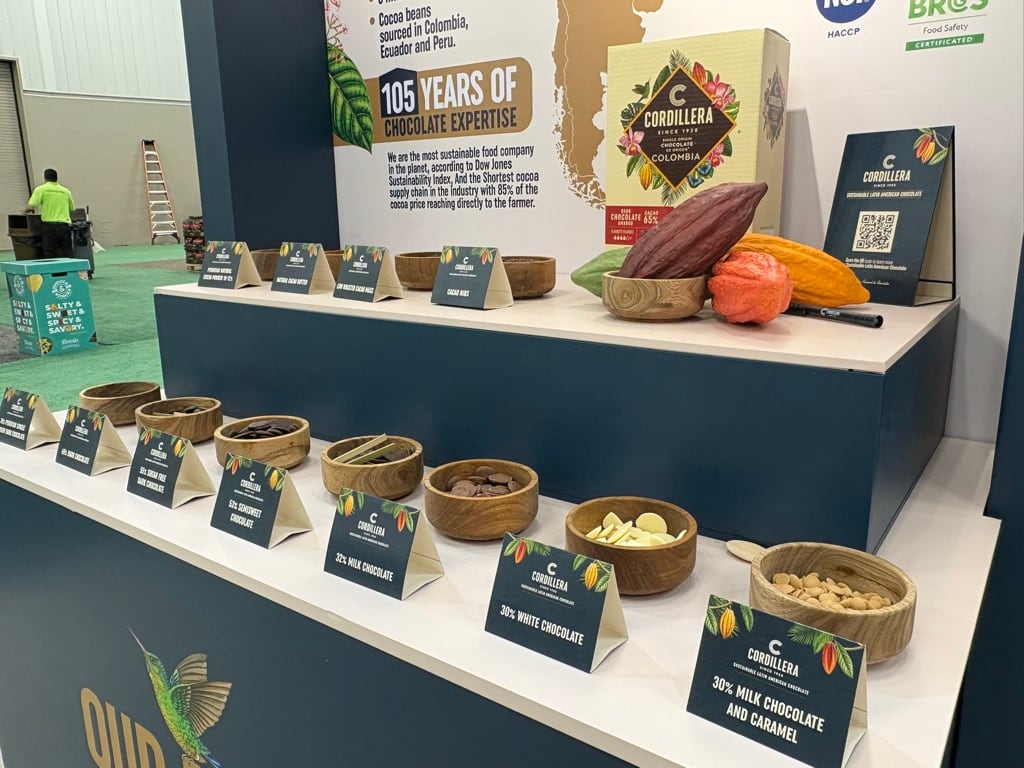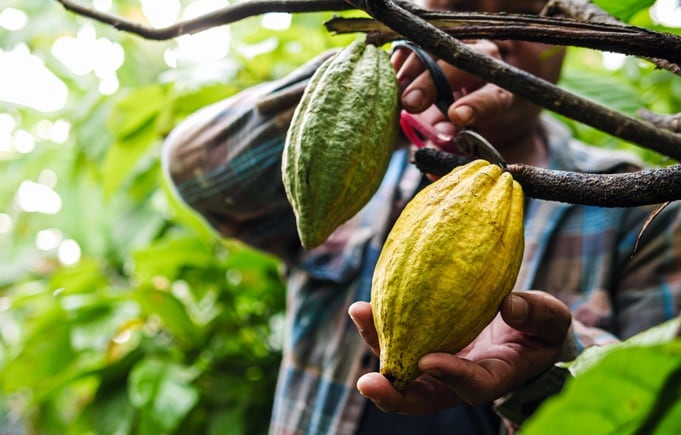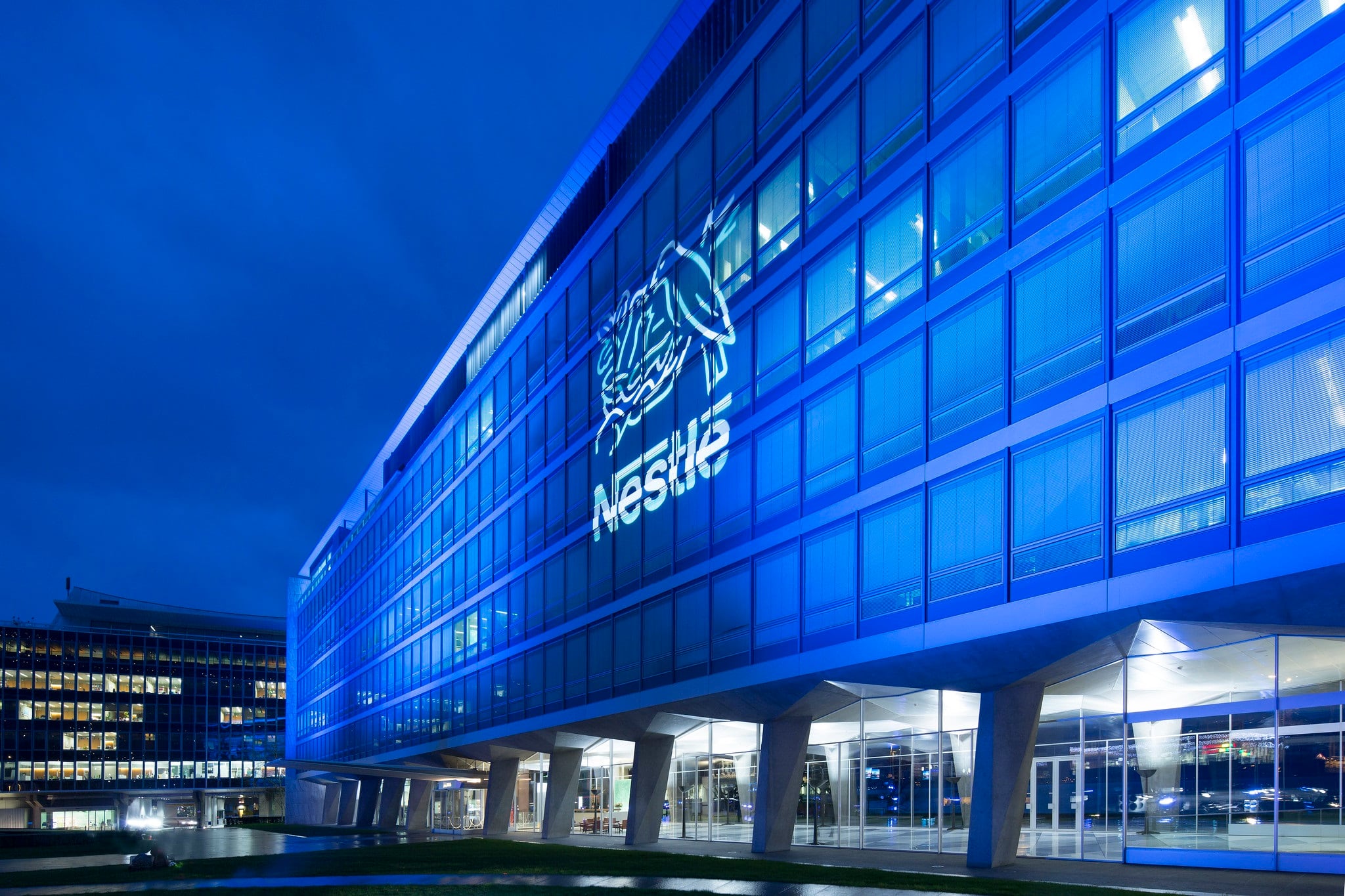As cocoa prices continue to soar due to climate-related crop failures and supply shortages, chocolate manufacturers of all sizes are grappling with price adjustments while striving to innovate without compromising product quality or consistency.
Cocoa prices reached an all-time high of $12,906 per metric ton in December 2024 and dropped to its lowest point this year at $7,553 per metric ton on April 8, according to Trading Economics cocoa commodity data. The current price is$10,896 per metric ton, as of this writing.
Hershey’s cocoa supply ‘is covered’ this year, leans on flavor innovations for top brands
Despite cocoa supply pressures, multinational confectioner The Hershey Company “is covered through this year” and does not intend to change its formulations any time soon, Lindsay McCabe, corporate communications and brand PR manager for Hershey explained, during the Sweets & Snacks Expo last week. The company sources from Brazil and West Africa, which have faced severe impacts on production and prices.
While market predictions in 2027 indicate a better outcome for the cocoa environment due to an improved 2024/2025 growing season, Hershey will continue to work with its cocoa partners while exploring cocoa alternatives, McCabe said.

For some of its brands, Hershey leans heavily on dual flavor innovation to maintain quality and consistency while reducing its chocolate quantity. For its no. 1 brand Reese’s, Hershey launches Reese’s PB&J Peanut Butter Cups in grape and strawberry jelly flavors.
Hershey’s milk chocolate caramel-filled chocolate bar is another example of how the company leans on flavored fillings to reduce chocolate, although the company did not specify by how much.
Cordillera faces minimal impact from cocoa due to local sourcing
Colombia-based Cordillera Chocolate’s supply chain is “very, very short,” according to Sara Aguilar, global marketing manager for Cordilla. The company sources “around 60% of cocoa” directly from cocoa farmers and cocoa farmer groups in Colombia, and from other Latin American countries, she said during the show.
These direct and local relationships help fortify Cordillera’s supply chain from external supply pressures, Aguilar added.
While Aguilar did not elaborate how much Cordillera pays its farmers, she assured that the company pays higher than the market standard to ensure the livelihoods of the farmers and their families. According to the Fair Trade Foundation, cocoa farmers earn on average 6% of the final value of a bar of chocolate. For a $10 bar of chocolate, a farmer could earn 60 cents from that bar, while the remaining $9.40 would go towards other parts of the supply chain.
Godiva focuses on quality over cost
Despite supply chain pressures and rising ingredient costs during and after COVID-19, Godiva maintained its super-premium quality standards – even increasing the use of high-cost ingredients like cocoa butter to achieve the brand‘s signature thin shell texture and clean finish, according to Thierry Muret, Godiva’s chef chocolatier.
Though Muret did not say whether those costs were passed on to consumers, the brand’s approach reflects a broader trend in the luxury food space to prioritize the quality even if the price tag edges higher.




